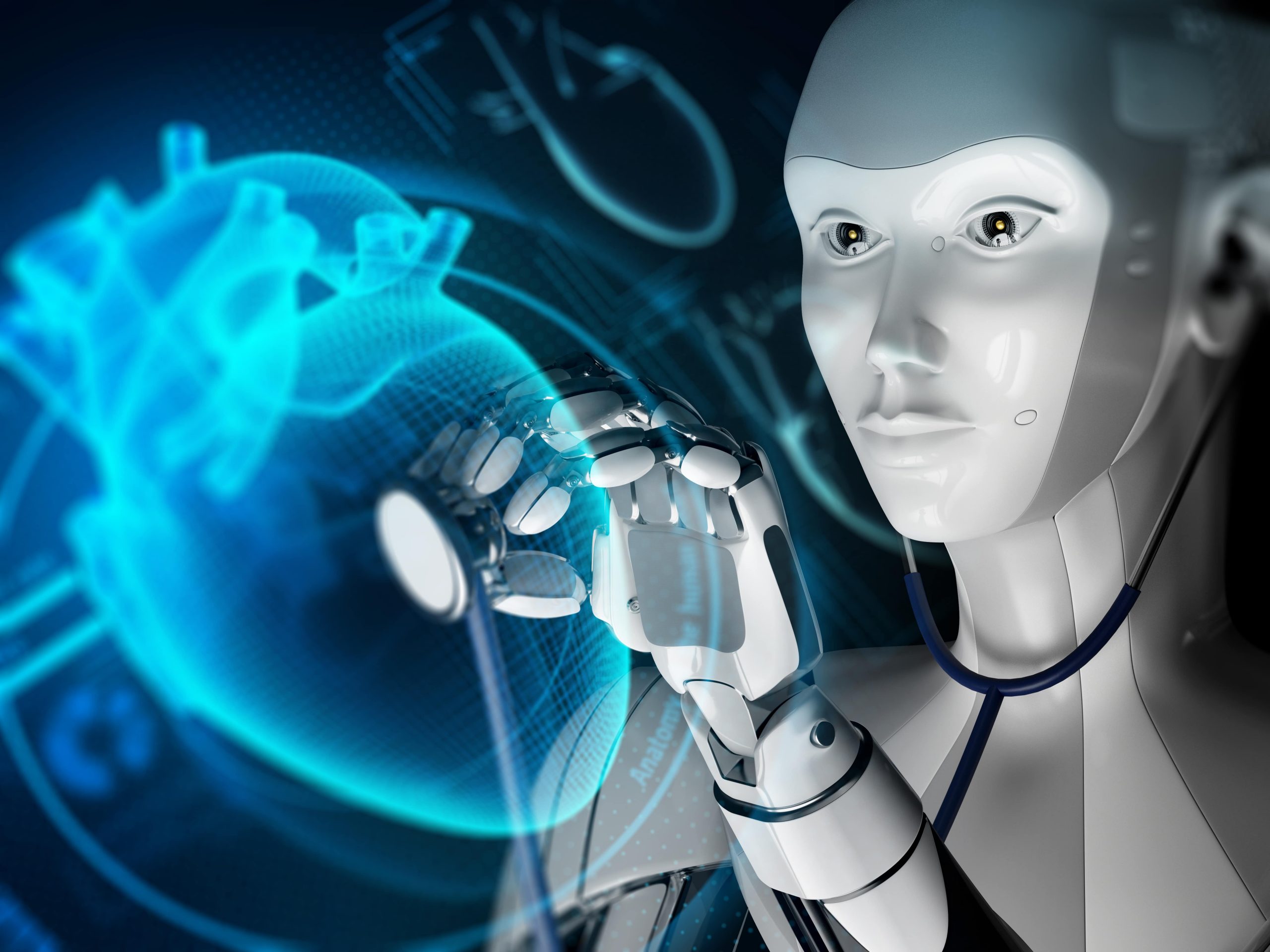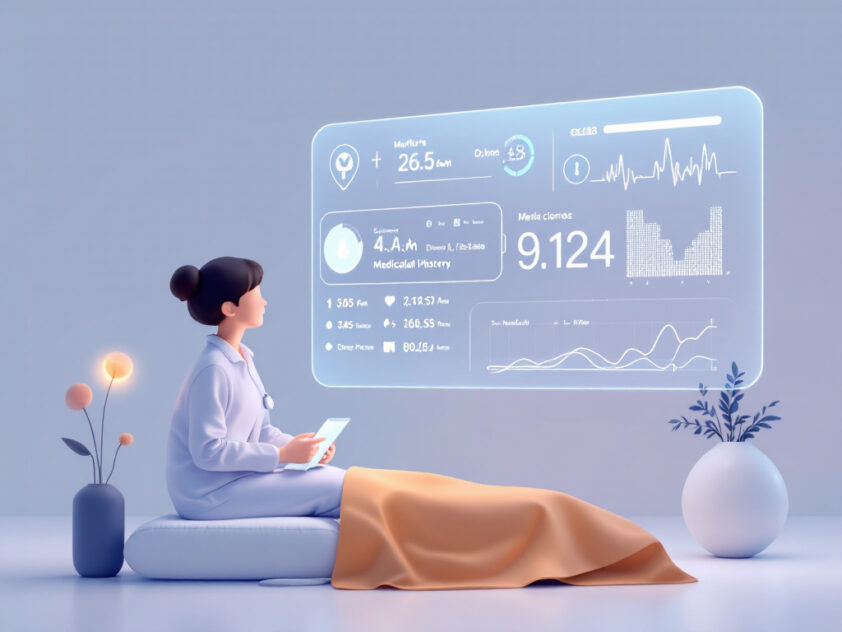The healthcare industry is experiencing significant transformation due to autonomous agents. These advanced AI systems are revolutionizing patient care, hospital management, and medical research. But what exactly are autonomous agents, and how are they making such a significant impact?
Autonomous agents are AI-powered systems that can think, learn, and make decisions independently. In healthcare, they serve various roles, from chatbots answering patient questions to robotic surgeons assisting in operations.
One of the most exciting applications of autonomous agents is improving patient care. These AI systems can quickly analyze vast amounts of medical data, identifying patterns and potential issues that humans might miss. This results in faster, more accurate diagnoses and personalized treatment plans. Imagine a virtual doctor always on call, ready to detect early warning signs of health problems before they become serious.
Autonomous agents also enhance hospital efficiency. They help schedule appointments, manage medical records, and even predict when equipment might need maintenance. This allows healthcare workers to focus more on patient care.
We will explore how these intelligent agents are transforming emergency rooms, aiding in complex surgeries, and expediting drug development. The future of healthcare is here, powered by artificial intelligence.
Roles of Autonomous Agents in Patient Care
The healthcare landscape is transforming with autonomous agents. These AI-driven systems are reshaping patient care, from initial visits to long-term health management.
Autonomous agents are promising in disease diagnosis. These AI systems can process vast amounts of patient data, from medical histories to current symptoms, with remarkable speed and accuracy. For instance, some AI models have demonstrated the ability to detect certain cancers from medical imaging with precision rivaling that of experienced radiologists. This augments doctors’ capabilities, allowing for faster and more accurate diagnoses.
Treatment recommendations are another area where autonomous agents excel. By analyzing a patient’s unique profile against extensive medical databases, these systems can suggest personalized treatment plans. This is particularly valuable in complex cases where multiple factors need consideration. A notable example is IBM’s Watson for Oncology, which assists oncologists in developing treatment strategies for cancer patients based on their individual characteristics and the latest medical research.
Personalized Health Advice: A Game-Changer in Patient Engagement
Excitingly, autonomous agents are providing personalized health advice. Virtual health assistants, powered by sophisticated AI algorithms, engage patients in ongoing conversations about their health. These digital companions can offer reminders for medication, suggest lifestyle changes, and even provide emotional support. Imagine an AI that knows your health history, current conditions, and daily habits, offering tailored advice to keep you on track with your health goals.
AI-driven virtual health assistants are not just convenient—they’re transforming how patients engage with their own health, making personalized care accessible 24/7.
Error reduction is another compelling argument for integrating autonomous agents in patient care. While human doctors can make mistakes due to fatigue or oversight, AI systems maintain consistent performance around the clock. This is particularly crucial in high-stress environments like emergency rooms, where quick and accurate decisions can be life-saving.
However, these autonomous agents aim to enhance rather than replace human healthcare providers. The human touch—empathy, intuition, and complex decision-making—remains irreplaceable. AI can process and analyze vast amounts of data, spot patterns invisible to the human eye, and provide support that makes healthcare more efficient and personalized.
The future potential of autonomous agents in patient care seems boundless. From early disease detection to ongoing health management, these AI-driven systems are poised to revolutionize healthcare delivery. The challenge lies in integrating these technologies thoughtfully, ensuring they enhance rather than diminish the human elements of care crucial to healing.
For patients and healthcare providers, embracing these innovations could mean a future where healthcare is more precise, personalized, and accessible. As autonomous agents evolve, they promise to be powerful allies in our quest for better health outcomes and a more efficient healthcare system.
Operational Efficiency Through AI
Artificial intelligence (AI) is revolutionizing operational efficiency in healthcare. Gone are the days of relying solely on human intuition to manage the complex ecosystem of a hospital. Today, AI agents are stepping in to enhance how healthcare facilities operate, ensuring smoother patient experiences and optimized resource allocation.
One of the most significant impacts of AI in healthcare operations is its ability to optimize patient flow. Imagine walking into an emergency room and being seamlessly guided through triage, diagnosis, and treatment without unnecessary delays. This is becoming a reality in hospitals leveraging AI. These intelligent systems analyze historical data, current patient loads, and even external factors like local events or weather conditions to predict and manage patient influx more effectively.
Resource management, often a headache for hospital administrators, is another area where AI shines. From staffing schedules to equipment allocation, AI agents can crunch numbers and spot patterns that humans might miss. For instance, an AI system might notice that certain specialties are understaffed on weekends when demand unexpectedly spikes, allowing administrators to adjust rosters proactively.
AI’s ability to predict patient admission rates is particularly impressive. By analyzing data points including seasonal trends, local health alerts, and even social media chatter, AI can forecast surges in hospital admissions with remarkable accuracy. This foresight allows hospitals to prepare in advance, ensuring they have the necessary staff, beds, and equipment ready when needed.
The impact of these AI-driven efficiencies is far-reaching. Patients benefit from reduced wait times and more personalized care. Healthcare providers can focus more on patient care and less on administrative tasks. And hospitals can make better use of their often-stretched resources, potentially leading to cost savings without compromising care quality.
AI in healthcare isn’t just about robots performing surgery. It’s about creating smarter, more efficient systems that allow human healthcare providers to do what they do best – care for patients.
However, implementing AI in healthcare settings isn’t without challenges. Issues of data privacy, algorithm bias, and the need for human oversight are all critical considerations. But as these systems continue to evolve and improve, their potential to transform healthcare operations is undeniable.
As we look to the future, it’s clear that AI will play an increasingly central role in healthcare operations. From streamlining patient flow to optimizing resource allocation and predicting admission rates, AI agents are helping healthcare facilities offer timely, efficient care while making the best use of their resources. It’s not about replacing human healthcare workers, but about empowering them with tools to work smarter. In this new era of AI-augmented healthcare, the ultimate winners are the patients who receive better, more efficient care.
Conclusion on Autonomous Agents in Healthcare

Autonomous agents are transforming healthcare, offering immense potential to elevate patient care, streamline operations, and accelerate biomedical research. The integration of AI in various healthcare domains addresses longstanding challenges and opens new frontiers of possibility.
Platforms like SmythOS are leading this healthcare transformation, providing powerful tools to seamlessly incorporate multiple AI models into cohesive systems. The visual workflow builder and robust debugging environment offered by SmythOS enable healthcare providers and researchers to develop, test, and deploy intelligent agents with unprecedented speed and precision.
By harnessing these advanced AI capabilities, healthcare institutions can significantly improve diagnostic accuracy, personalize treatment plans, and optimize resource allocation. Autonomous agents can tirelessly analyze vast datasets, identify patterns invisible to the human eye, and provide real-time insights to support clinical decision-making.
The future of healthcare, empowered by autonomous agents, is one of enhanced efficiency and improved patient outcomes. As these technologies continue to evolve and integrate more deeply into healthcare systems, we can anticipate a new era of medicine where AI augments human expertise to deliver more precise, accessible, and patient-centric care.
The rise of autonomous agents in healthcare represents not just a technological advancement but a paradigm shift in how we approach health and wellness. By embracing these innovations responsibly and thoughtfully, we have the opportunity to create a healthcare ecosystem that is more responsive, effective, and ultimately, more human.
